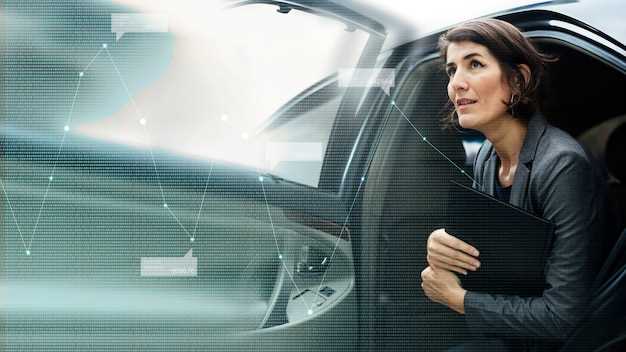
The integration of AI systems into the automotive industry has ushered in a new era of technological advancement, fundamentally altering how vehicles are designed, manufactured, and operated. These innovations not only enhance vehicle performance but also prioritize safety, efficiency, and the overall driving experience. As the world moves towards a more interconnected future, the role of AI in shaping automotive technology becomes increasingly significant.
One of the most notable applications of AI in automotive technology is the development of autonomous driving systems. These systems utilize sophisticated algorithms to process data from various sensors, enabling vehicles to navigate complex environments with minimal human intervention. By leveraging machine learning and computer vision, autonomous vehicles are becoming safer and more reliable, potentially revolutionizing transportation as we know it.
Furthermore, AI is enhancing vehicle connectivity through smart systems that improve communication between cars, infrastructure, and drivers. These advancements facilitate predictive maintenance, real-time traffic management, and personalized driving experiences, thereby driving the automotive industry towards a more sustainable and efficient future. As these AI innovations continue to evolve, they will undoubtedly redefine the landscape of automotive technology, making it essential for manufacturers and consumers alike to embrace these changes.
Leveraging Machine Learning for Predictive Maintenance in Vehicles

Machine learning algorithms are revolutionizing automotive technology by enabling predictive maintenance, which enhances vehicle reliability and reduces operational costs. By analyzing vast amounts of data generated by various vehicle systems, these smart solutions can predict potential failures before they occur.
Key advantages of leveraging machine learning for predictive maintenance include:
- Real-time Monitoring: Continuous data collection from sensors allows for real-time monitoring of vehicle conditions, providing insights into performance and potential issues.
- Data Analysis: Machine learning systems process historical data from maintenance records and sensor outputs, identifying patterns and trends that indicate wear and tear.
- Failure Prediction: Algorithms can predict failures with impressive accuracy by analyzing factors such as mileage, driving habits, and environmental conditions.
- Cost Reduction: Proactive maintenance based on predictions minimizes unexpected breakdowns, ultimately leading to lower repair costs and enhanced vehicle uptime.
The implementation of machine learning in predictive maintenance involves several critical steps:
- Data Collection: Gathering extensive data from onboard diagnostics, telemetry, and historical maintenance records.
- Model Training: Developing machine learning models using this data, focusing on distinguishing between normal wear and signs of potential failure.
- Algorithm Deployment: Integrating predictive models into vehicle systems to provide real-time analytics and alerts.
- Continuous Improvement: Regularly updating models with new data to improve predictive accuracy and adapt to changing conditions.
As automotive manufacturers embrace AI and machine learning technologies, the future of predictive maintenance looks promising. The shift from reactive to predictive strategies not only enhances vehicle performance but also transforms how owners and manufacturers view maintenance, making it more efficient and data-driven.
Integrating AI-Powered Systems for Enhanced Driver Assistance
The automotive industry is undergoing a significant transformation with the integration of AI-powered systems that enhance driver assistance technologies. These innovations aim to improve safety, efficiency, and the overall driving experience by utilizing advanced algorithms and machine learning capabilities.
One of the primary applications of AI in automotive systems is the development of Advanced Driver Assistance Systems (ADAS). These systems utilize sensors, cameras, and radars to monitor the vehicle’s surroundings, providing real-time data to assist drivers in making informed decisions. For instance, lane-keeping assist and adaptive cruise control utilize AI to analyze traffic patterns, maintaining optimal vehicle positioning and speed.
Moreover, AI systems are capable of processing vast amounts of data from various sources, allowing them to predict potential hazards before they become a threat. For example, collision avoidance systems leverage AI to assess the behavior of surrounding vehicles and pedestrians, enabling proactive measures that can drastically reduce the likelihood of accidents.
Another critical area where AI significantly contributes is in the realm of personalization. By analyzing driver behavior and preferences, AI-powered systems can tailor various vehicle settings, such as seat positioning, climate control, and infotainment options, enhancing comfort and user experience. This level of customization represents a major shift in how vehicles interact with their drivers.
Integration of AI in automotive systems also plays a vital role in data-driven maintenance. By continuously monitoring vehicle performance and diagnosing issues in real time, AI can alert drivers about required maintenance tasks, thereby reducing downtime and promoting safety.
In conclusion, the integration of AI-powered systems into automotive technology is revolutionizing the way we experience driving. With enhanced safety features, personalized settings, and proactive maintenance alerts, these innovations are shaping a future where driving is not only more enjoyable but also safer for everyone on the road.
Exploring Autonomous Navigation Technologies in Smart Cars

Autonomous navigation technologies are revolutionizing the automotive industry by integrating advanced AI systems into smart cars. These systems utilize a combination of sensors, cameras, and machine learning algorithms to understand the vehicle’s surroundings, making real-time decisions for secure and efficient navigation.
One of the key components of autonomous navigation is the use of LiDAR (Light Detection and Ranging) technology. This system emits laser beams to create a precise 3D map of the environment, allowing the vehicle to detect obstacles and navigate complex terrains. Human-like perception is achieved by complementing LiDAR with cameras that provide color and texture information, enhancing the vehicle’s understanding of road conditions and traffic scenarios.
Additionally, AI-driven computer vision algorithms play a crucial role in interpreting the data collected by these sensors. These algorithms process images in real-time, identifying lane markings, traffic signs, pedestrians, and other vehicles. Their ability to learn from vast datasets enables these systems to improve over time, making smart cars safer and more reliable.
Furthermore, intelligent vehicle-to-everything (V2X) communication systems are emerging as a game changer in autonomous navigation. By connecting smart cars to each other, as well as to infrastructure such as traffic lights and road signs, these systems enhance situational awareness and reduce the likelihood of accidents. The integration of real-time traffic data allows for optimized route planning, resulting in reduced travel times and less congestion.
As technology advances, the future of autonomous navigation in smart cars looks promising. Ongoing research focuses on improving the resilience of AI systems under various weather conditions, as well as ensuring robust cybersecurity measures to protect against potential threats. The automotive landscape is undoubtedly being reshaped by these innovations, paving the way for a new era of safer and more efficient transportation.




